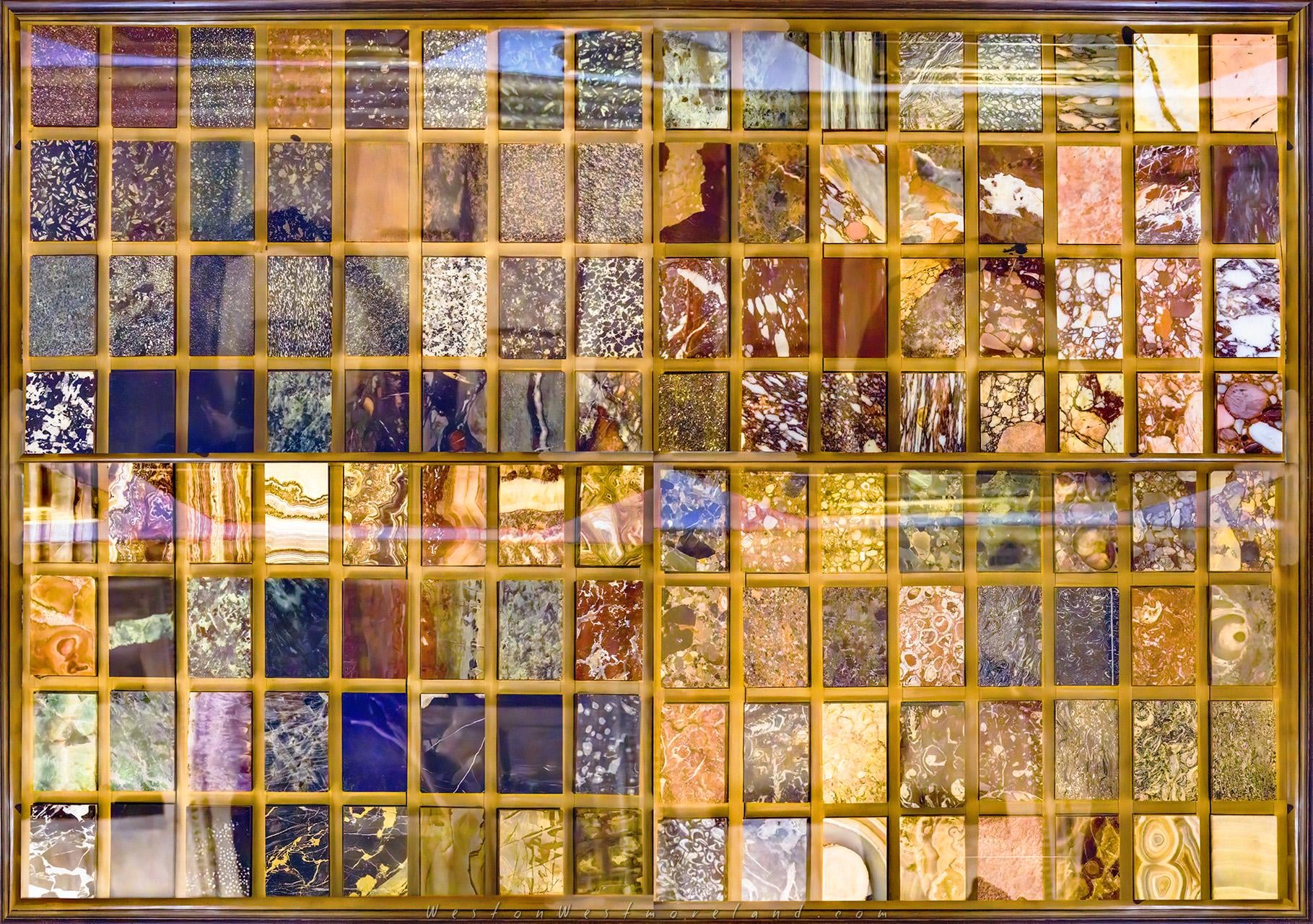
Samples of some of the marbles used in the Roman Empire. For centuries, all sorts of different marbles were methodically sought and brought from all the reaches of the empire. Myriad marbles covered the walls and floors of the Imperial buildings. Rome was a richly colorful place…[1820×1280] [OC]
by WestonWestmoreland

4 Comments
…A lot of people think of Ancient Rome as a pretty monochrome place; in the popular imagination, its temples and palaces gleam with polished white marble, while a visit to the ruins of the Roman Forum is tinted with beige and ochre. In reality, however, the ancient city was a riot of color: the walls of private residences were decorated with bright frescoes, public spaces were adorned with garlands and flowers, and, as recent research has shown, even the apparently white statues were often enhanced with paint.
No aspect of the ancient city, however, was more vivid or brilliant than its many colored marbles. These were not just different shades of white as you might expect (although there were many of these), but came in dozens of different varieties: yellow, black, red, as well as many blues and greens. Highly polished and often arranged in complex geometric patterns, they would have overwhelmed the senses and added to the splendor of what was then capital of the Mediterranean world.
Rome’s closest source of marble was modern Carrara, in Tuscany, the same quarries that provided the blocks for Michelangelo’s David and Pietà over a thousand years later and which continue to produce snow-white stone for artists and architects around the world. However, as they expanded their control across Europe, the Romans began to discover more and more exotic varieties.
Marble is formed through complex geological processes of heat and pressure, processes that are incredibly variable and unpredictable; impurities and trace elements combine to produce different shades and qualities of stone. No two quarries are the same, and local conditions across the Mediterranean created all the colors of the rainbow––and more. The Romans coveted these wondrous materials wherever they went and brought them back to the Eternal City to decorate their public buildings and private villas.
A glance at the variety of these marbles and where they were unearthed shows how far Rome’s power stretched: from Thebes in Egypt came the deep green “serpentine”, while the bright-red “rosso antico” was sourced from near Sparta in Greece. North Africa produced a striking “Numidian yellow” whose deep honey color was flecked with blue veins like a particularly ripe cheese. Other varieties came from the hills of what is now Turkey or the Greek islands. All of these were extracted, packaged and shipped back to Rome for the delight of its citizens and the glory of its fabulously wealthy patrons.
The Roman poet Statius described attending a dinner party at the fabulous palace of the emperor Domitian on the Palatine and took special note of its many marbles:
*“There, the stones from the Libyan mountain gleam in competition with those from Troy,*
*Marbles from Syene and Chios too, and rocks to rival the color of the green-blue sea.*
*Stone from Luna is only brought in to support the columns, and it’s a long look up!*
*Your weary eyes can hardly find the roof; you’d think it was the gilded ceiling of heaven.*”
Clearly, the emperor and his entourage relished not only the luxury of these beautiful materials, but also the striking juxtapositions to be seen in their jaw-dropping combinations.
When educated Romans saw this sort of sight, however, they didn’t see only beauty; they also saw the power and might of the expansive Roman empire. Syene, Chios, Libya: these were all places that Rome controlled, and the many marbles that decorated the city were as much physical proof of the Empire as they were its products. To offset pink with green, as Domitian did in his Palatine palace, was only possible because of Rome’s domination of the Mediterranean, and although luxury stones became distributed across the empire nowhere were they more richly concentrated than in the metropolis itself… (follows in replay comment)
Thank you, that was exquisite! A pleasure to read!
Great post!
One thing not mentioned in your source is that a vast quantity of ancient marble (think, e.g., the marble facade of the Colosseum) was also systematically destroyed: it was also common to smash ancient marble and burn it in lime kilns to produce quicklime. That’s probably the fate of most of it. I’d like to think that the most precious marble was recycled in churches though!
OP, if you’re interested you may want to check out Rolf Schneider’s academic work on coloured marble in Ancient Rome. (if you haven’t already)